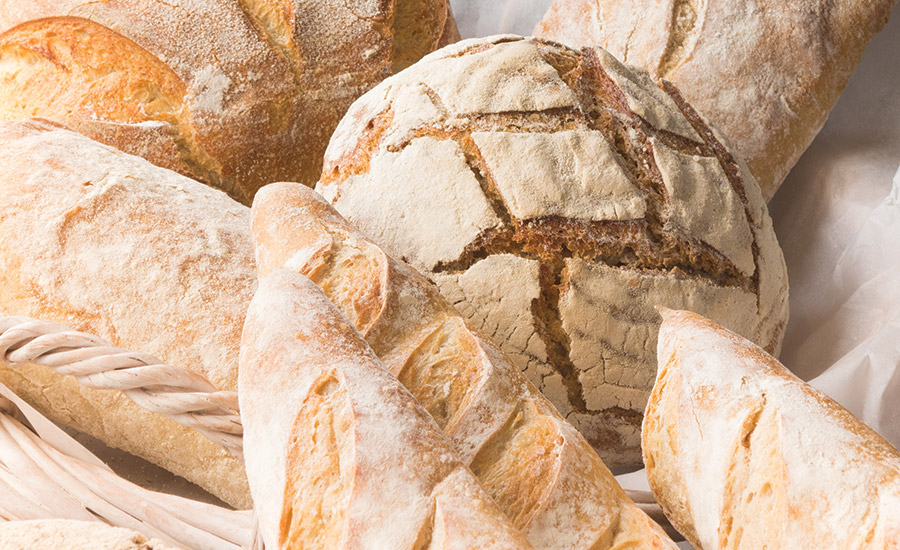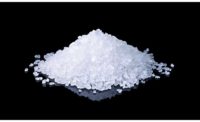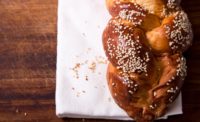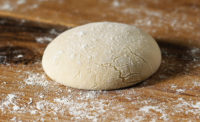The autolyse is an optional but easy method to incorporate into the mixing cycle of many artisan breads. The autolyse technique was likely used throughout bread-making history but was codified by Professor Raymond Calvel in his seminal work, “Le Goût du Pain,” which has been translated into English as “The Taste of Bread.”
The autolyse reduces mixing time, enhances extensibility and gives flour the opportunity to absorb more water—an effortless way to increase hydration and reduce ingredient cost. All of these beneficial characteristics more easily bring the dough to proper development. The term, which roughly means “self-relaxation” or “self-dissolution,” refers to the breakdown of weak gluten bonds by protease enzymes naturally present in the flour.
An autolyse can be incorporated as a prelude to actual mixing by adding all the final dough water and flour. Liquid preferments, such as a 100 percent hydrated poolish, need to be added because the preferment holds so much of the overall hydration. Lower-hydration preferments, such as a biga, can be held back, because they don’t contain as much water and the mix won’t be too dry. Commercial yeast is held back (if it is being used) because the organic acids produced through fermentation swell gluten proteins. This dough development will be beneficial later on, but during autolyse we want the dough to relax and “self-destruct.”
Salt is also held back, because its presence increases gluten strength in two ways: It strengthens the ionic bonds between gluten strands, and it slows the activity of protease, the enzyme that cleaves peptide bonds in the gluten strands. Withholding salt and yeast during the autolyse period allows continued breakdown of gluten bonds, creating a soft dough that will reform into a well-organized gluten matrix once yeast and salt are added and the dough is kneaded.
An autolyse period is generally about 20–30 minutes long. Longer autolyse periods are often used due to production schedule reasons, but it is unclear if the longer time is significantly more beneficial. A possible drawback of an extended autolyse is having the dough become too warm or too cool due to environmental conditions in the bakery. The dough should be covered to prevent a skin from forming on the surface of the dough.
The observant baker will notice the dough is more extensible and developed following the 20–30 minute autolyse period. Salt and yeast (if used) are now added and mixed on first speed until incorporated. At this point, all ingredients except inclusions should be added and evenly distributed. The dough will become firmer, not only because of the mechanical mixing, but also due to the tightening effect of the salt.
As previously noted, reduced mixing time is a benefit of the autolyse. Therefore, second speed mixing time should be reduced. A dough without an autolyse that is mixed for three minutes on first speed and three minutes on second speed might be reduced to simple incorporation on first speed, one minute on first speed after salt and yeast are added, and two minutes on second speed.
Most wheat-based, lean doughs benefit from an autolyse. The higher enzyme activity of rye breads with more than 30 percent whole rye flour usually do not receive an autolyse.




